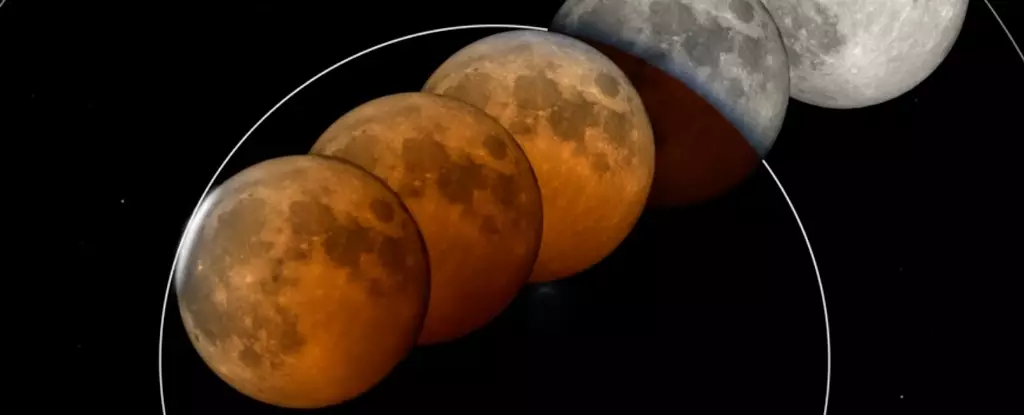On an otherwise unassuming Thursday, celestial wonders will unfold as the moon turns a deep crimson, captivating stargazers across the globe. This remarkable event, known as a total lunar eclipse, occurs when Earth positions itself directly between the sun and the moon, enveloping the lunar surface in a shadow. Often referred to as a “blood moon,” this awe-inspiring transformation has sparked excitement and intrigue among astronomy enthusiasts and casual observers alike.
The natural allure of the blood moon is underscored by a scientific spectacle. Earth’s atmosphere, acting as a lens, refracts sunlight that filters through, projecting a mesmerizing red hue onto the moon. This effect arises from a phenomenon known as Rayleigh scattering—the same process that gives our sky its blue color during the day. Instead of the usual white light, only the red wavelengths manage to reach the moon’s surface, leading to this ethereal glow. NASA aptly describes the scene: it’s as if the sunrises and sunsets from around the globe converge, painting the moon in warm, fiery tones.
The Perfect Timing: Don’t Miss the Show
If you’re in the right timezone, prepare for an unforgettable night. The lunar eclipse will begin with a partial phase at 1:09 a.m. ET. Observers will witness a gradual shadowing effect, where it might seem as though a nibble is being taken from the moon—a tantalizing precursor to the full spectacle. At precisely 2:26 a.m. ET, the moon will be at the apex of the eclipse, drenched in red. For a truly immersive experience, binoculars or telescopes can reveal features of the moon’s craters, accentuated by their striking new coloration.
As totality stretches for over an hour until 3:31 a.m. ET, the magic of the night will captivate anyone who dares to gaze upward. The subsequent hours will witness a re-emergence of the moon as Earth’s shadow steadily recedes, making way for its familiar brilliance by 6 a.m. ET. This isn’t merely a fleeting moment; it’s a reminder of the vastness and complexity of celestial mechanics, and a visual feast for those fortunate enough to witness it.
Capturing the Moment: Tips for Observers
For those looking to immortalize this night of wonders, capturing the blood moon in photographs involves a little preparation. Utilizing a tripod is essential for stability during long exposure shots, which allow the camera to collect more light, rendering the moon’s reddish tinge vividly. As the eclipse progresses, creativity in framing and technique can yield stunning captures of this otherworldly scene. Venture outside, breathe in the night air, and indulge in the tranquility that often accompanies these nocturnal events.
However, if—heaven forbid—this particular blood moon eludes your gaze, fret not! This spectacular display is only the initial installment in a trilogy of lunar eclipses over the next months. Mark your calendars for a subsequent total lunar eclipse in September, followed by another in March, ensuring that everyone has ample opportunity to be swept away by the magic of the cosmos. The universe may test the patience of enthusiasts, but it rewards the persistent with extraordinary sights that foster awe and inspire wonder.

